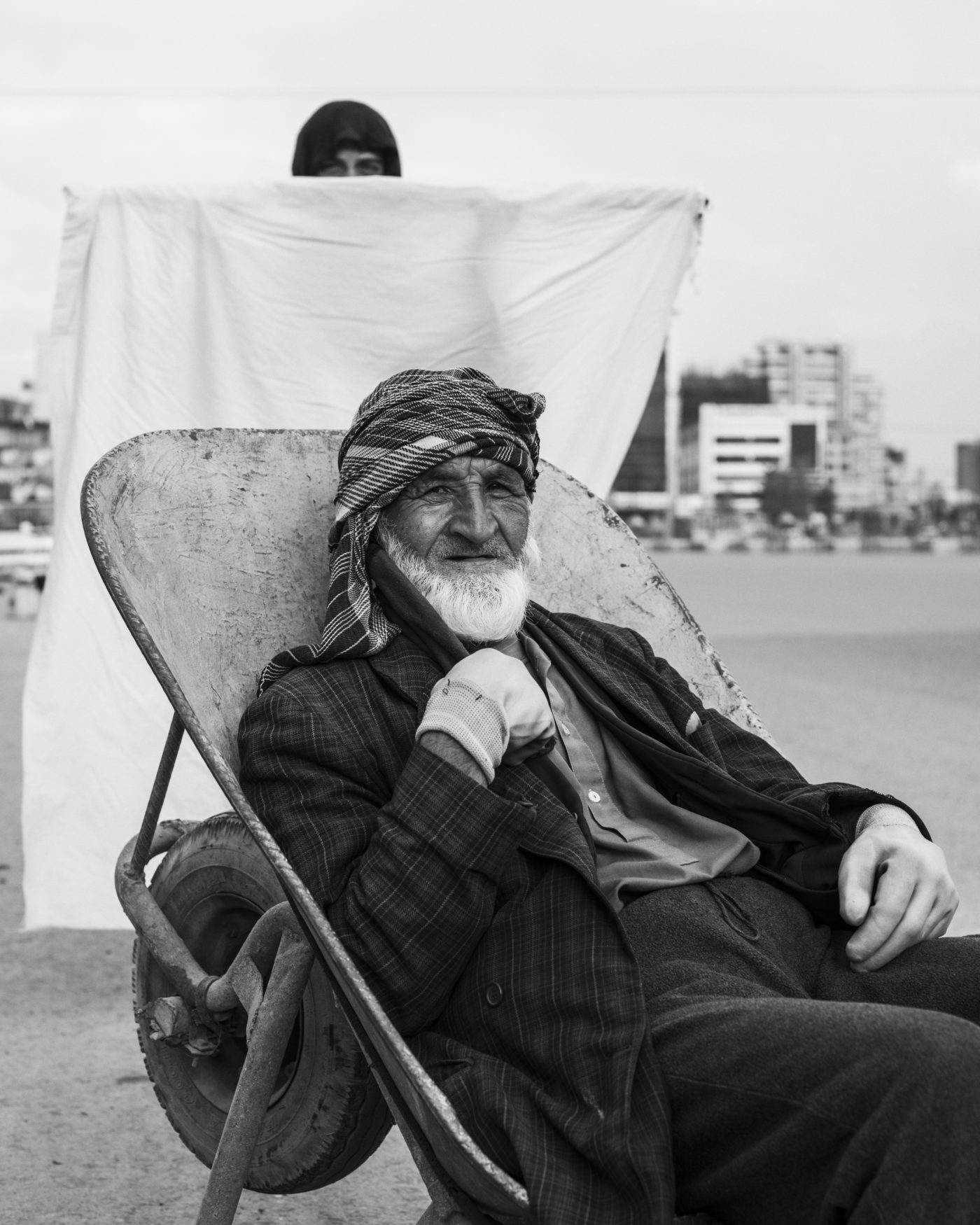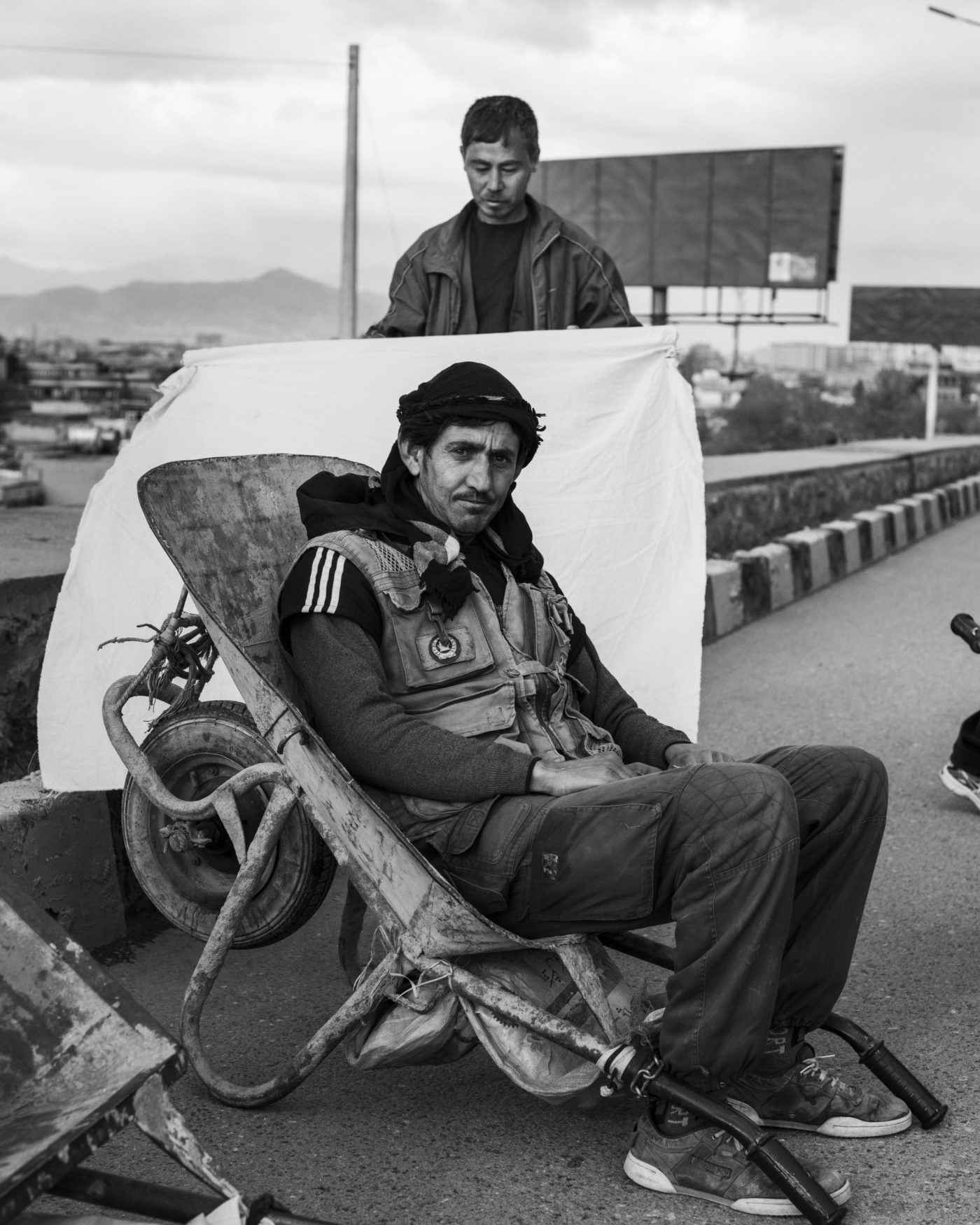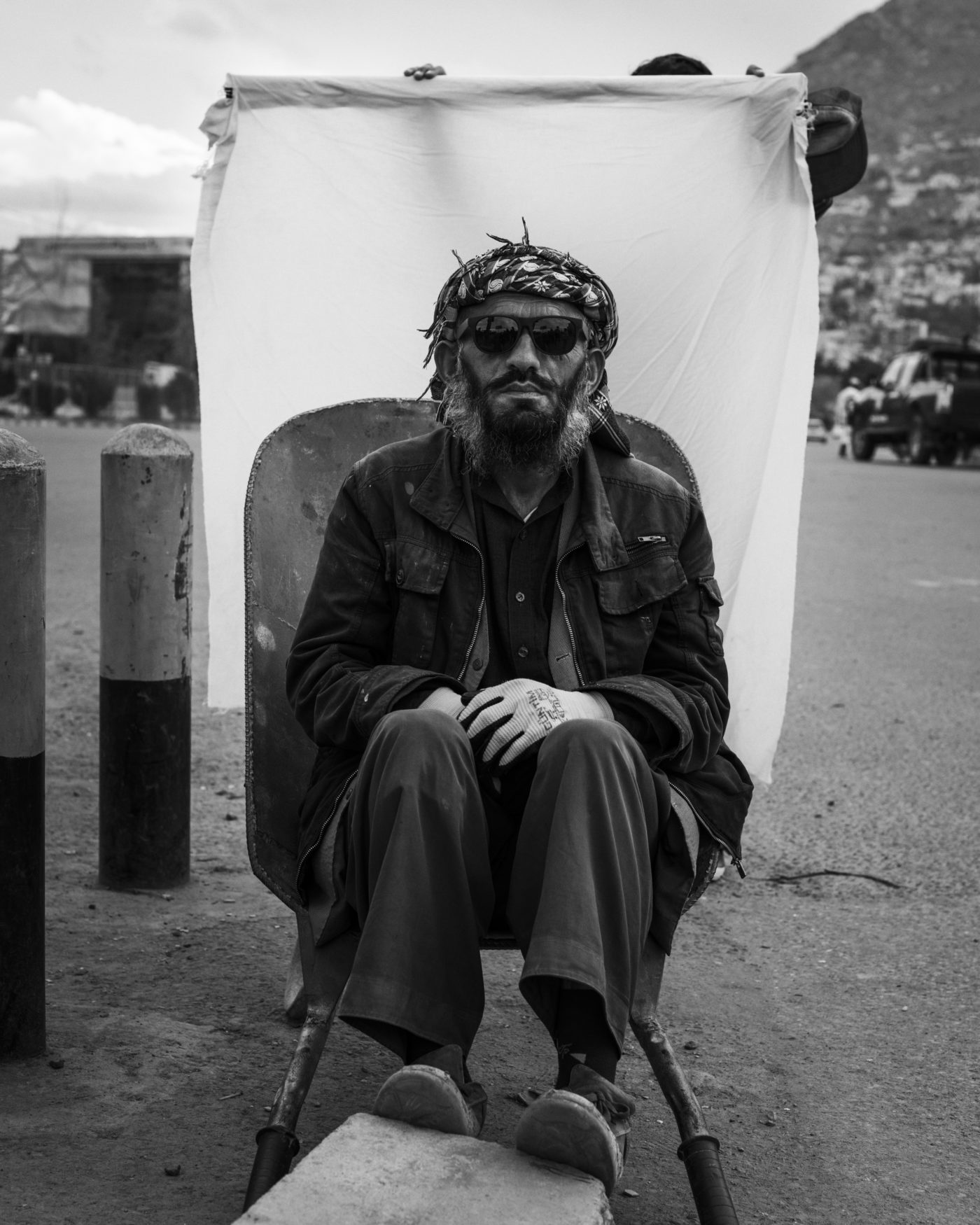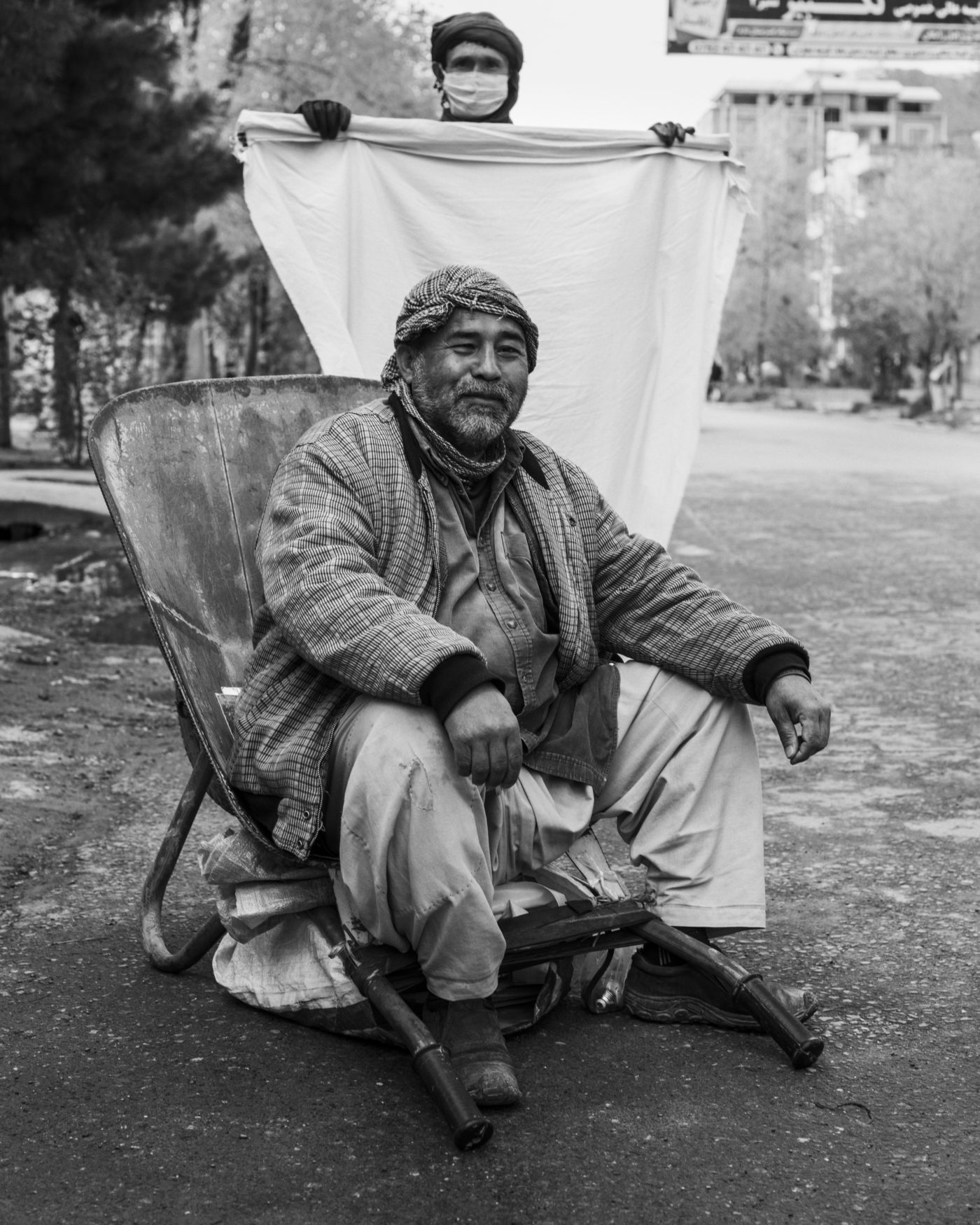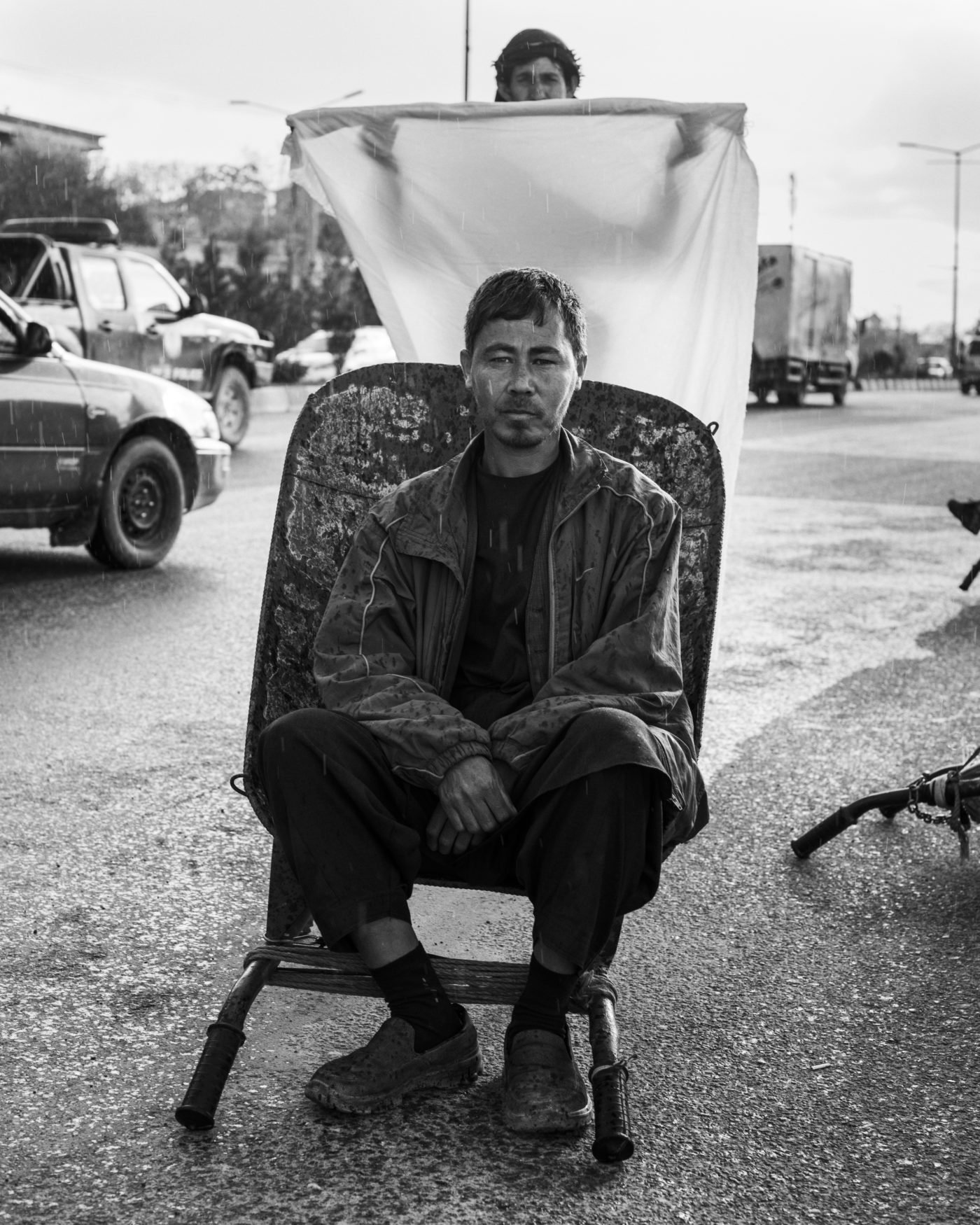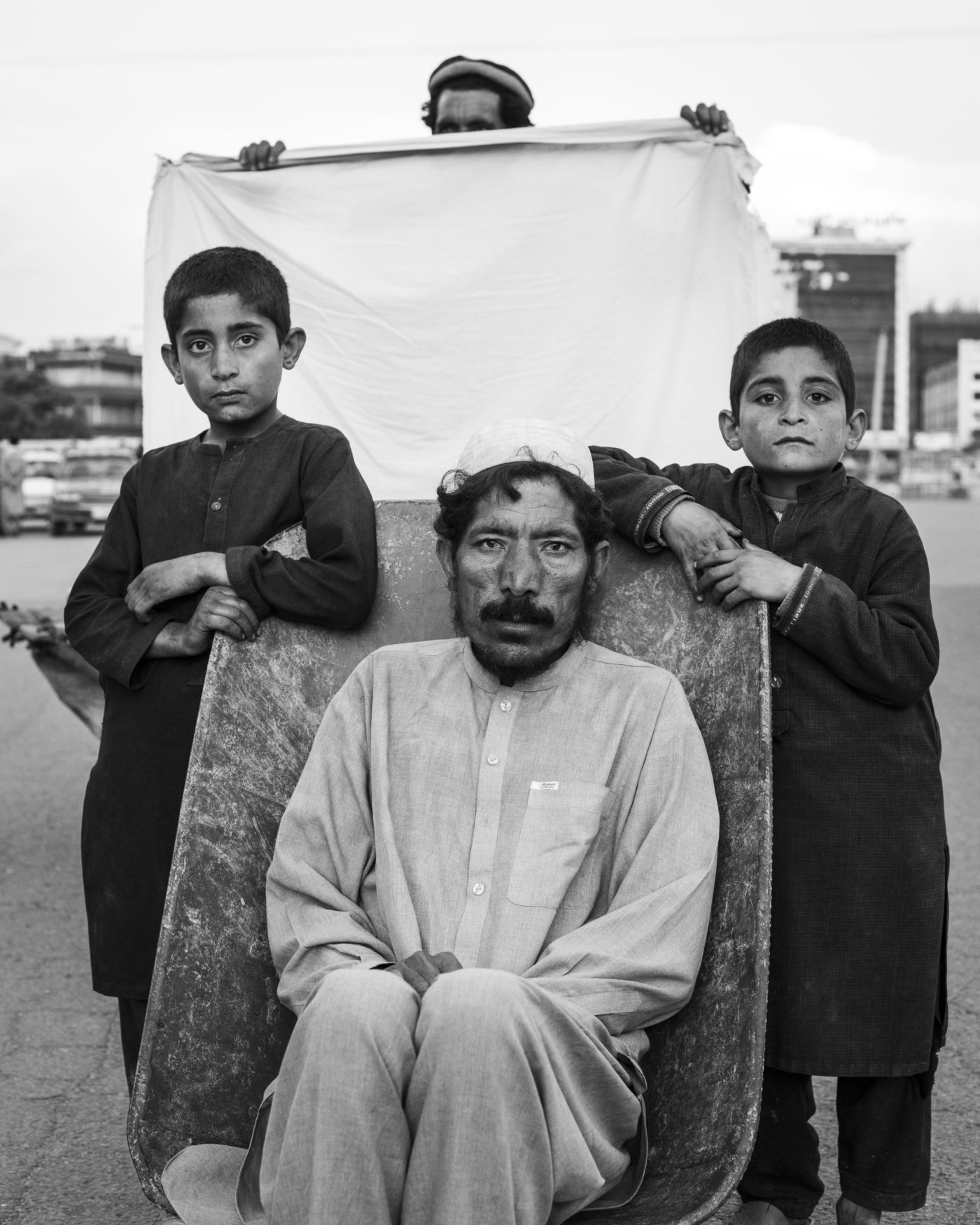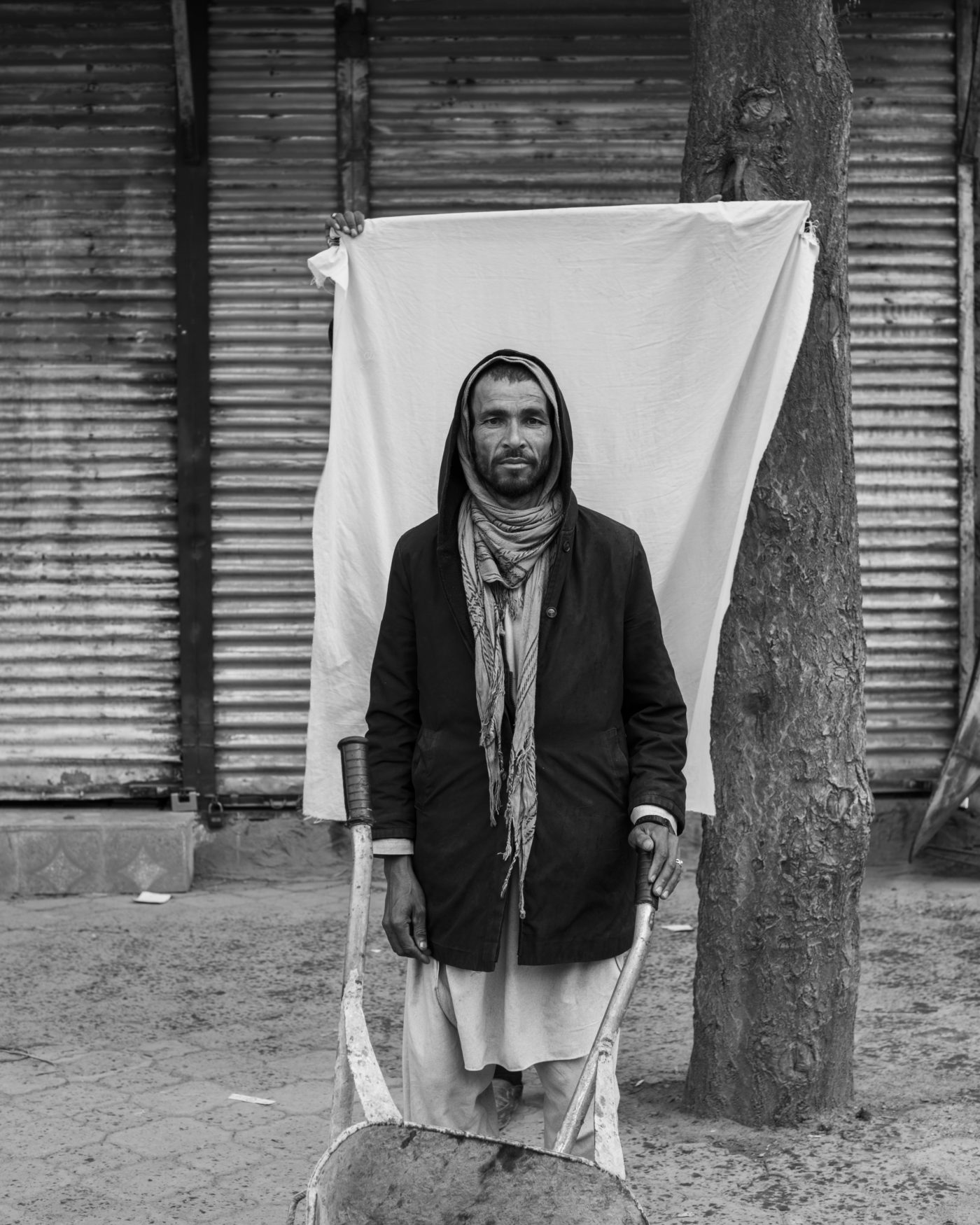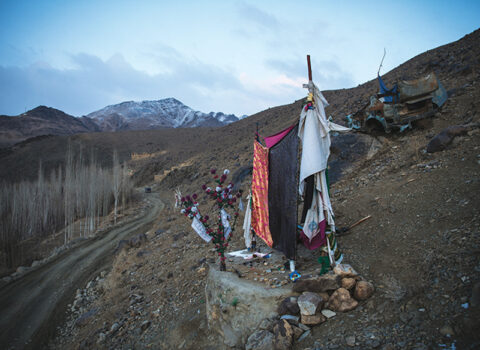Emptied Out
As Kabul and regional capitals went into lockdown on March 28, men with wheelbarrows began to line the empty thoroughfares of cities, sitting on their upturned hulls. Some stared at kites fluttering in the sky, lolled to sleep, or sat in pairs to chat. These men, who provide day labor or carry groceries for shoppers, are known as karachais. In Afghanistan, they have come to symbolize not just a health crisis, but a food and livelihood crisis. Prior to the pandemic, 83 percent of Afghans were living on or below the equivalent of $1.50 per day. When businesses were shuttered across Kabul, many families faced the choice of starving or going into debt to pay rent and buy food. Though the central government began to provide bread to 250,000 families in Kabul on April 29, the price of basic food items in bazaars has risen sharply, with supply chains disrupted by border closures, and threatens to push more Afghans into poverty. Impoverished and vulnerable people in other parts of the world face similar problems: in April, the United Nations World Food Program’s executive director David Beasley told the UN Security Council that, “due to the coronavirus, an additional one hundred and thirty million people could be pushed to the brink of starvation by the end of 2020. That’s a total of two hundred and sixty-five million people.” Beasley went on to warn of the possibility of “facing multiple famines of biblical proportions within a few short months.”
On a rainy April afternoon in northern Kabul, I met Ebadullah, a thirty-year-old father of four. He sat on his wheelbarrow at the side of a two-lane road, waiting for bread. “Since this morning I haven’t had any work. We only eat bread,” he said, referring to his family. “If I can buy five breads in a day we eat half at night and half in the morning. The days I don’t work we’re hungry.”

